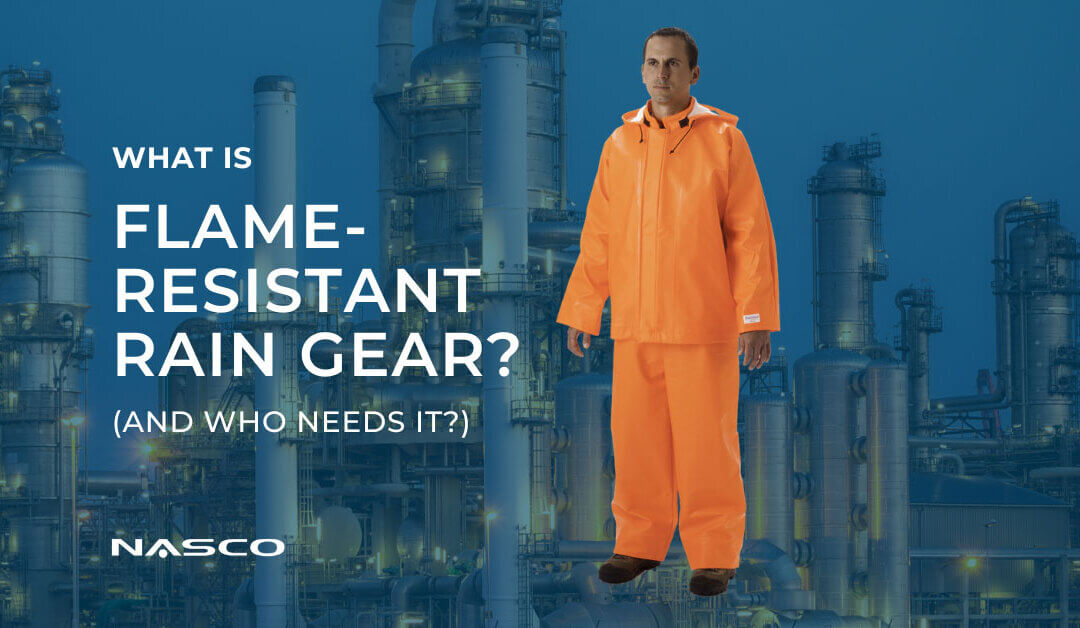Flame-resistant (FR) rainwear is designed to protect against adverse weather conditions and potential exposure to open flames or high heat. This type of clothing is essential for individuals working in hazardous environments, such as oil and gas, utilities, and chemical processing.
People who typically need flame-resistant rainwear include:
- Oil and gas industry workers: These individuals often work around flammable materials and chemicals, making FR rainwear essential for their safety.
- Utility workers: Electricity and gas utility workers are exposed to potential electrical arcs and flash fires, requiring protection from both wet conditions and flames.
- Firefighters and emergency responders: These professionals need FR rainwear to protect themselves from the elements while attending to emergencies involving fire, hazardous materials, and other dangerous situations.
- Construction workers: Workers on construction sites may face hazards such as welding sparks, exposed electrical wires, or flammable substances, necessitating FR rainwear.
- Chemical industry workers: Those working with flammable or reactive chemicals can benefit from flame-resistant rainwear to minimize the risk of injury during accidents or spills.
When selecting FR rainwear, it’s crucial to consider the nature of the work, potential hazards, and compliance with relevant safety standards.
Materials:
Flame-resistant rainwear typically utilizes materials like Nomex, a brand of meta-aramid fiber developed by DuPont, or other flame-resistant fabrics, which maintain their integrity when exposed to high temperatures. These materials self-extinguish and do not support combustion, which helps to prevent the spread of flames. Standards: FR rainwear is subject to industry standards to ensure it provides adequate protection. Some common standards include:
- ASTM F1891: This standard specifies the minimum performance requirements for flame-resistant rainwear designed for use by workers exposed to flames and electrical arcs.
- ASTM F2733: his specification covers the minimum performance criteria for flame resistance and other requirements for rainwear used by workers with the potential to be simultaneously exposed to wet weather conditions and either hydrocarbon or petrochemical industrial fires.
- NFPA 70E: This standard addresses electrical safety in the workplace, including the use of flame-resistant garments for workers exposed to arc flash hazards.
Features and design considerations:
- High visibility: FR rainwear often incorporates high-visibility colors and reflective materials to increase worker visibility in low-light conditions.
- Waterproof seams: Seams should be sealed to prevent water and moisture from penetrating the garment.
- Adjustable closures: Adjustable closures at the wrists, waist, and ankles can help customize the fit and prevent water ingress.
- Ventilation: Breathable materials and venting systems help to manage moisture and prevent overheating.
- Fall Protection Access: Jackets and coats should accommodate the use of fall protection and allow access to clip on to a D-ring.
- Hood design: An integrated or detachable can provide additional protection against rain and flame exposure. A three dimensional design is more effective in providing protection as well as maintaining peripheral visibility.
NASCO offers a wide range of top-notch FR rainwear options that are designed to keep you safe and protected in hazardous environments. Don’t compromise on safety; choose NASCO for reliable, industry-compliant FR rainwear that meets your needs. Browse our extensive selection to find the perfect FR rainwear for your specific work environment.


Recent Comments